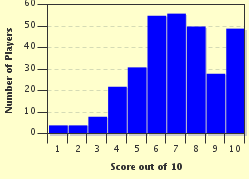Quiz Answer Key and Fun Facts
1. The most distant of the contributing sources of the mighty Amazon begins in a spot known as Nevado Mismi. In which mountain range can this be found?
2. After leaving the mountains in which it originates, and before the Amazon enters the Amazon Jungle, it passes through an area of land known by what generic term?
3. Amazingly so, the Amazon basin covers a huge area, some 7,000,000 square kilometres, of which 5,500,000 is covered by its beautiful rainforest. Most of this rainforest is found in which country?
4. The Amazon is navigable for large vessels for 1,500 kilometres from its mouth up to which famous Brazilian musical town where the Negro and Solimoes rivers meet?
5. Where the Rio Negro and the Rio Solimoes rivers meet, the water is two different colours for some time because of the volume of the flow. Is it true that these dual colours flow in this way for five hundred kilometres?
6. Fascinatingly so, dolphins are even found in the Amazon river. The largest species of river dolphins are found in this area of the world. Another amazing fact about the Amazon dolphin is that at one stage during its life cycle, it changes colour. What colour is this?
7. The Amazon travels past the town of Obidis in the state of Para in the northeast of Brazil on its long journey. Geologists believe that long ago this part of the world once overlooked which body of water?
8. Because the height of the water changes so rapidly within any given 24 hour period along parts of the Amazon, many people who live along its banks have designed their homes to cope with this. What are these settlements called?
9. People argue constantly about the exact location of the mouth of the Amazon. This is because of all the channels, the late joining of another river into the fray, and the existence of an island all within the same location, so the confusion, though rather silly, is understandable. What are all these infuriating river channels called?
10. Moving across South America in the same direction as the Amazon, what amazing find was discovered by scientists in 2011?
Source: Author
Creedy
This quiz was reviewed by FunTrivia editor
Tizzabelle before going online.
Any errors found in FunTrivia content are routinely corrected through our feedback system.

